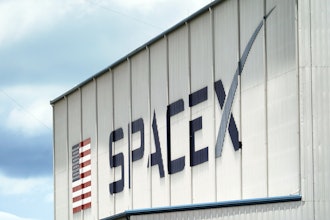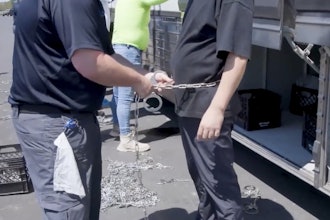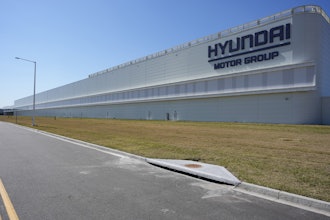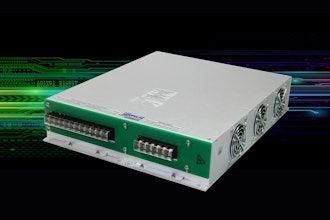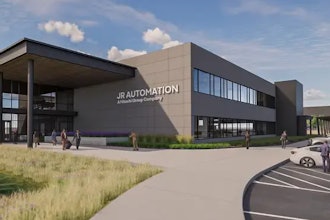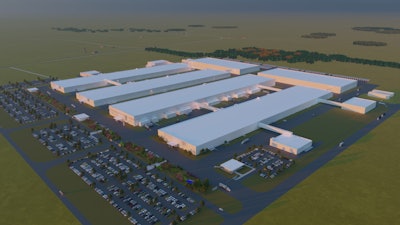
As industrial projects expand into under-resourced rural areas or fast-growing urban zones, an urgent and often overlooked issue is coming to the forefront: wastewater management. Once considered an ancillary concern, wastewater management is increasingly defining the success or failure of major industrial developments. From permit violations to overloaded municipal systems, wastewater infrastructure is now among the most pressing constraints facing industrial leaders.
The challenge is not only technical but also cultural. To keep pace with shifting environmental standards and stakeholder expectations, industrial leaders will want to adopt a new mindset: wastewater is not a background utility; it’s a core strategic issue.
Early and informed planning around water and wastewater systems is becoming essential for industrial project delivery. Successful outcomes increasingly depend on how well industrial owners, engineers, municipalities, and regulators align to identify and resolve hidden infrastructure risks before they delay or derail projects. By demystifying technical challenges and emphasizing proactive collaboration, project teams can address specialized discharge issues, integrate reuse strategies, and ensure compliance from day one. To understand the scale of the issue, it helps to begin with the most common and costly misstep: treating wastewater planning as an afterthought.
The Challenge: Wastewater as an Afterthought
In the development of many industrial projects, wastewater infrastructure is treated as a secondary issue, addressed in later stages of project design and construction and only when required by permitting authorities or when problems arise. Decision-makers often seek help after receiving pressure from local utilities or warning letters from regulators. They’re surprised to find that something they considered outside their core mission can now threaten startup of operations or stall expansion.
This late-stage scramble can lead to costly consequences. Without proactive wastewater planning, industrial leaders may significantly delay startup of a new facility, violate permits, overburden public utilities, or be denied additional capacity when expanding their facilities.
The solution is clear: water planning should be embedded in the earliest phases of industrial design. It should be treated with the same strategic foresight as production design and site selection. Only then can facilities be resilient, compliant, and future-ready. But even when industrial leaders recognize the need for planning, they often encounter limitations of municipal infrastructure.
Capacity Strains and the Municipal Dilemma
Even when wastewater management is considered early in a project, challenges remain.
Municipal infrastructure—especially in rural or suburban areas—is often ill-equipped to support rapid industrial growth. Facilities that typically handle residential wastewater are now expected to process complex industrial discharges of variable strength and composition. Predictable daily flows from households are being replaced with irregular, high-strength wastewater from new manufacturing plants.
Municipal leaders are in a bind. They want to encourage economic development and attract new tax bases, but must also ensure compliance with state and federal discharge regulations. Supporting industrial growth means upgrading infrastructure, but doing so without the necessary information or timelines can put their operations—and legal standing—at risk.
To address this, collaboration across the public-private divide is essential. Project team leaders must work closely with utilities, starting during the planning phase, to determine what a facility will discharge, how much, and when. Weekly cross-functional meetings with municipal engineers, regulators, and economic development agencies are increasingly common and often the key to success. Beyond physical capacity, many projects face an additional layer of complexity—navigating incomplete or proprietary information about what’s in the waste stream.
Designing Without All the Answers: IP Concerns and Unknown Stream Contents
Another major hurdle in industrial wastewater planning is the challenge of incomplete information. Some industrial leaders—particularly in competitive sectors like EV battery manufacturing—are simply unable to disclose the full contents of their waste streams due to intellectual property (IP) concerns. Others may simply not know, especially if the facility is the first of its kind.
Compounding this uncertainty is the rapidly evolving production landscape. For instance, in sectors like battery manufacturing, the type of product produced can change over the two- or three-year design and construction period, driven by shifting market demands. As a result, plants under construction might retool soon after completion. This means design teams must build flexibility into systems from the beginning, preparing for the unknown as market forces continue to evolve.
In these cases, wastewater project team leaders need to walk a delicate line. They collaborate with process teams, coordinate with regulators and the local POTW on discharge requirements, request targeted data, and often develop specialized sampling programs under strict non-disclosure agreements. These programs balance the need for design accuracy with the need to protect proprietary technology.
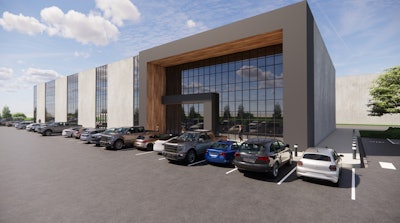 Successful projects aren’t just those that deploy the latest technology. They’re the ones that start early, communicate often, and treat water planning with the urgency it deserves. Navigating these complexities is not simply solving problems and solving a core strategic priority—it’s about enabling the future of sustainable industrial growth.Gresham Smith
Successful projects aren’t just those that deploy the latest technology. They’re the ones that start early, communicate often, and treat water planning with the urgency it deserves. Navigating these complexities is not simply solving problems and solving a core strategic priority—it’s about enabling the future of sustainable industrial growth.Gresham Smith
Laboratory analysis helps determine not just the contents but the variability of the waste stream—critical factors for selecting treatment technologies. Any data collected typically must be disclosed to state agencies, so it’s essential to manage both the technical and regulatory implications carefully. Once data is gathered and risks are understood, the focus turns to choosing the most effective wastewater strategies for the facility’s unique needs.
The Right Tools for the Job: Wastewater Solutions that Work
Contrary to popular belief, the most effective wastewater strategies are not always the most advanced or innovative. The key is selecting the right approach for each situation. For high-strength wastewater, the focus may be on targeted treatment technologies to remove contaminants before discharge. For broader operational goals, conservation and reuse can be powerful tools. Mechanical systems, for example, often produce relatively clean water that can be captured, lightly treated, and reused, reducing both discharge volume and operating costs.
In some cases, zero-liquid discharge systems are deployed, where wastewater is treated for reuse with no liquid residual or reject discharge from the treatment process. More often, however, hybrid strategies prevail: stream segregation, selective treatment, and reuse of certain flows for non-potable purposes like cooling.
Importantly, these approaches are not just for new mega facilities. They are increasingly being retrofitted into existing plants that are looking to expand, ensuring continued compliance and sustainable growth. Of course, selecting the right technical solution is only part of the equation—success also hinges on continuous coordination across a diverse group of stakeholders.
Communication Is Everything: Aligning Stakeholders Early and Often
One of the most difficult aspects of wastewater planning is ensuring ongoing, proactive coordination across multiple stakeholders, often with competing priorities. Industrial leaders may operate under tight economic and product development timelines. Municipalities must maintain compliance and political goodwill. Regulators must enforce the rules while supporting growth.
Personality dynamics, turf protection, and communication gaps can all get in the way. But when project team leaders, utility leaders, and agency officials come together early and maintain open lines of communication, outcomes improve significantly. Weekly or biweekly meetings are common in successful projects, creating accountability and keeping progress on track.
It’s also critical that water engineers have a seat at the table from day one. Too often, early-stage site planning is done without their input, only to discover later that a site is unviable due to wastewater constraints. As these collaborations mature, attention increasingly shifts toward long-term sustainability and resilience in the face of rising environmental and economic pressures.
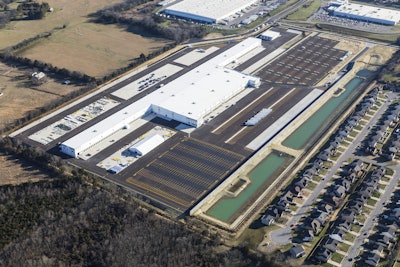 As industrial projects expand into under-resourced rural areas or fast-growing urban zones, an urgent and often overlooked issue is coming to the forefront: wastewater management.Gresham Smith
As industrial projects expand into under-resourced rural areas or fast-growing urban zones, an urgent and often overlooked issue is coming to the forefront: wastewater management.Gresham Smith
Reuse, Recovery, and Future Resilience
As water scarcity intensifies, particularly in the West and parts of Texas, the need for water reuse and resource recovery is becoming more urgent. Industrial facilities are major water users, and the pressure to conserve is rising fast.
Facilities are increasingly exploring options to reuse water for cooling and other mechanical processes. In parallel, there’s growing interest in recovering valuable materials—such as phosphorus or lithium—from waste streams and solid residuals, especially when these materials are scarce or environmentally costly to extract.
Regulatory pressure, climate change, and rising costs are all accelerating this trend. But again, the technologies themselves are not typically the highest hurdle—it’s the mindset shift that’s required. Facilities must plan, integrate water reuse into their operational models, and align cross-functional teams early to succeed. These pressures make it critical for industrial leaders to rethink how wastewater fits into their broader strategy—and adopt a more proactive approach moving forward.
Takeaways for Industrial Leaders
For companies embarking on major industrial projects, several insights are clear:
- Involve water engineers early. Waiting until the design, permitting, or construction phases is too late.
- Strategic wastewater design is not about complexity—it’s about fit. Choose the right solutions for the right streams.
- Reuse strategies are increasingly beneficial. They reduce both regulatory burden and operational cost.
- Proactive coordination with municipalities and regulators is non-negotiable.
- Mindset matters. Treat water and wastewater like any other essential production factor, not as afterthoughts.
A Defining Issue for the Next Decade
Ultimately, the ability to manage water and wastewater wisely will define which companies thrive in a more regulated, resource-constrained future. As climate risks grow and regulations tighten, wastewater planning will only become more critical.
The next decade will see increased scrutiny, new contaminants of concern, and mounting pressure to conserve water and recover valuable resources. Industrial leaders must not only adapt but also lead.
Successful projects aren’t just those that deploy the latest technology. They’re the ones that start early, communicate often, and treat water planning with the urgency it deserves. Navigating these complexities is not simply solving problems and solving a core strategic priority—it’s about enabling the future of sustainable industrial growth.
O. Kent Hartzog, PE, is Senior Associate and Technical Practice Leader/Treatment with Gresham Smith. He can be reached at [email protected].














